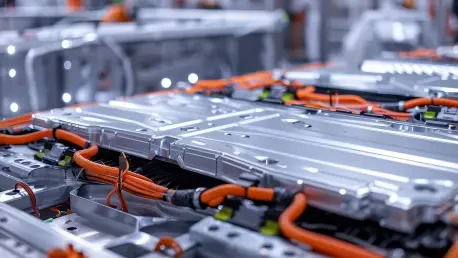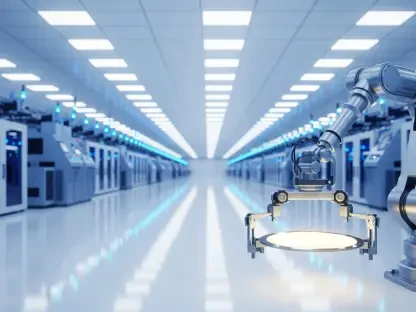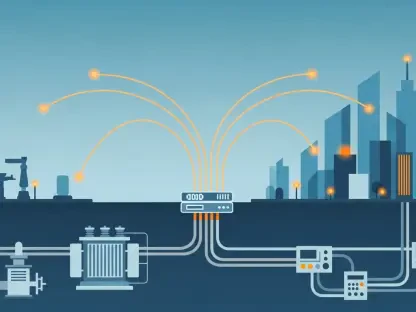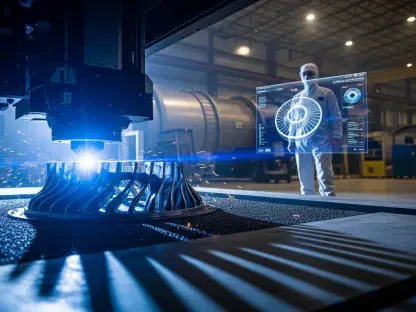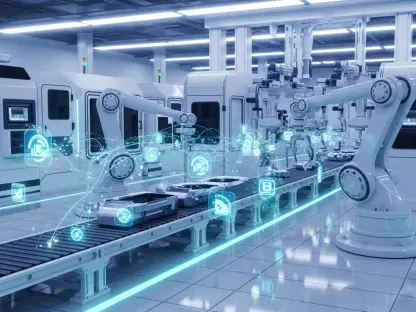In a world increasingly dominated by the need for sustainable solutions, the demand for electric vehicles (EVs) is soaring, bringing the spotlight on battery production as a cornerstone of the automotive future. The establishment of new battery production facilities serves not only as a strategic move but also as a necessity to keep pace with the growing number of EVs on the road. A significant development in this arena has emerged, with Tesla Group A.S. announcing plans to build its second electric vehicle battery production plant in Jharkhand, India. This facility promises to transform the region’s industrial landscape and reinforce India’s position in the global green energy sector. Through exploring the current growth patterns, understanding expert insights, and envisioning the future, this article delves into the implications of this trend on the industrial sector.
Current Landscape and Growth Patterns
Data and Adoption Trends
The growth of EV battery production is closely mirrored by global adoption rates of electric vehicles, which have experienced a consistent uptick in recent years. With governments across the world implementing policies to reduce carbon emissions, battery production has become a pillar of this transition. For instance, numerous reports highlight unprecedented investments in battery manufacturing, underscoring the trend’s accelerating momentum. In regions like India, where there is a robust policy backing for renewable energy and industrial expansion, initiatives like the one proposed by Tesla Group stand to make a substantial impact. The choice of Jharkhand, known for its rich natural resources and industrial growth, aligns with the state’s ambition to become a strategic node in the EV supply chain.
Real-World Applications
The real-world implications of expanding battery production are multifold. Prominent examples include Tesla’s facility in Romania, which sets a precedent for the company’s ambitions in India. Such plants not only cater to local demand but also play a crucial role in exporting technology and expertise. Additionally, companies like Panasonic and LG Chem are expanding their manufacturing prowess to meet the burgeoning global demand. This has led to a ripple effect, inspiring other industries to innovate in battery-related technologies and materials, further enhancing the appeal and accessibility of electric vehicles. As more companies follow, the landscape of clean energy solutions continues to take shape, presenting practical applications that integrate into everyday life and industry.
Expert Insights and Industry Perspectives
In analyzing the broader implications of this trend, insights from industry experts reveal both opportunities and hurdles on the path to sustainable EV production. According to renowned professionals, while the establishment of new plants demonstrates progress, challenges such as supply chain constraints and technological advancements must be addressed. Experts note that partnerships between regions rich in raw materials, such as Jharkhand, and industry giants facilitate a win-win scenario, promoting innovation and economic growth. By leveraging local resources and expertise, these collaborations pave the way for an efficient and sustainable EV ecosystem. Furthermore, thought leaders emphasize the transformative potential of such investments, noting their capacity to reduce carbon footprints and accelerate the transition towards green energy codes across the globe.
Future Outlook and Implications
Looking ahead, the expansion of EV battery production is poised to usher in several transformative developments. This trend holds the potential not only to redefine global automotive standards but also to foster economic growth by creating thousands of jobs and boosting associated industries. However, achieving these outcomes hinges on overcoming substantial challenges. These include balancing the regional resource distribution, developing advanced battery technologies, and ensuring sustainable practices across production cycles. As EV battery technology continues to evolve, the implications reach beyond the transportation sector, heralding increased adoption of renewable energy systems and smart grid innovations. By understanding these dynamics, industries and governments are better equipped to navigate the landscape of this complex yet promising trend.
Conclusion and Call to Action
The expansion of EV battery production highlighted by Tesla Group’s initiative in Jharkhand signified more than just an industrial development—it marked a turning point for sustainable energy and regional economic progress. This endeavor embodied a strategic vision to harness local resources and global expertise for a cleaner, more sustainable future. As industries and governments look beyond immediate gains towards long-term solutions, the groundwork laid by such initiatives offered valuable insights. The onus rested heavily on continued collaboration, innovation, and commitment to eco-friendly practices to alter the course of energy consumption worldwide. Such efforts were vital in shaping the world toward a more sustainable, innovative, and economically viable path.
